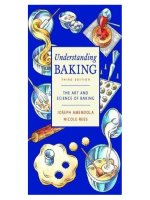clout [electronic resource] the art and science of influential web content
Bạn đang xem bản rút gọn của tài liệu. Xem và tải ngay bản đầy đủ của tài liệu tại đây (10.94 MB, 238 trang )
Clout: The Art and Science of Influential Web Content
Colleen Jones
New Riders
1249 Eighth Street
Berkeley, CA 94710
510/524-2178
510/524-2221 (fax)
Find us on the Web at: www.newriders.com
To report errors, please send a note to
New Riders is an imprint of Peachpit, a division of Pearson Education.
Copyright © 2011 by Content Science, LLC.
Project Editor: Michael J. Nolan
Development Editor: Je Riley/Box Twelve Communications
Production Editor: Rebecca Winter
Copyeditor: Gretchen Dykstra
Proofreader: Doug Adrianson
Indexer: Julie Bess
Cover Designer: Mimi He
Interior Designer: Kim Sco
Compositor: Danielle Foster
Notice of Rights
All rights reserved. No part of this book may be reproduced or transmied in any form by any means, elec-
tronic, mechanical, photocopying, recording, or otherwise, without the prior wrien permission of the pub-
lisher. For information on geing permission for reprints and excerpts, contact
Notice of Liability
e information in this book is distributed on an “As Is” basis without warranty. While every precaution has
been taken in the preparation of the book, neither the author nor Peachpit shall have any liability to any per-
son or entity with respect to any loss or damage caused or alleged to be caused directly or indirectly by the
instructions contained in this book or by the computer soware and hardware products described in it.
Trademarks
Many of the designations used by manufacturers and sellers to distinguish their products are claimed as
trademarks. Where those designations appear in this book, and Peachpit was aware of a trademark claim, the
designations appear as requested by the owner of the trademark. All other product names and services iden-
tied throughout this book are used in editorial fashion only and for the benet of such companies with no
intention of infringement of the trademark. No such use, or the use of any trade name, is intended to convey
endorsement or other aliation with this book.
ISBN 13: 978-0-321-73301-6
ISBN 10: 0-321-73301-0
9 8 7 6 5 4 3 2 1
Printed and bound in the United States of America
CLOUT: THE ART AND SCIENCE OF INFLUENTIAL WEB CONTENT
iv
FOREWORD
e web is all about action verbs. We click. We search. We navigate. We
make choices. Alone among other forms of media, we’re the ones who con-
trol our experience.
When organizations try to connect with their customers online, one of the
rst things they always want to know is “how can we get our users to do
what we want them to?”
ere’s an answer to this question, but it requires a change in mindset.
Marketers typically want to build awareness for their products, and they try
to replicate this broadcast approach on the web. ey create static designs
that recall print ads, ashy microsites that replicate TV commercials, and
email blasts that resemble nothing so much as a street-corner barker, yell-
ing loudly while he tries to press a yer into your hand.
And then they wonder why users don’t do what they want them to.
Organizations that want to connect with users online need to shi their
approach from gaining awareness to building inuence. Persuading people
to behave dierently means understanding how to inspire people, motivate
them, and gain their trust.
e user experience eld might rightfully say: “Inuencing user behavior?
Why, that’s what we do!” And it’s true—if you’re looking for techniques
to prod people into behaving a certain way, your friendly user experience
designer can help you. ey’ll tell you that the way to get users to do what
you want them to is to design a sexier landing page, chunk pages so they
ow beer, and create an eye-catching call to action. Not working well
enough? Just A/B test dierent options until you nd the optimal design.
We’ve lost our inuence with users because our obsession with the medium
means we’ve lost our focus on what really maers — the message. We’re so
focused on form that we’ve forgoen about substance. It’s time to bring aen-
tion back to what we want to say, not just how and where we want to say it.
Well, guess what? Long before there even was a web, we knew how to com-
municate our messages by tailoring them to the needs and expectations
of an audience. We knew how to persuade people by appealing to logic or
emotion. We knew the art of rhetoric.
v
ACKNOWLEDGMENTS
Now, “rhetoric” might seem like the province of glad-handing politicians
and oily salesmen, bombastic orators trying to convince naive rubes to part
with their hard-earned cash. If that’s what you’re imagining, let me assure
you: Colleen Jones is the exact opposite of that stereotype. With clear rea-
soning and straightforward prose, she’ll make the art and science of persua-
sion accessible to everyone.
In this book, Leen provides a solid framework for thinking about how to
inuence people’s aitudes, behaviors, and decisions online. She draws on
decades of research in rhetoric and technical communication, outlining a few
key principles that can help any organization be more persuasive on the web.
is book will oer practical advice to anyone who wants to inuence
behavior or decision-making using the web. But don’t expect to nd just
tips and tricks—Leen oers a holistic approach to content strategy that
will tie all your communication eorts together, including your website,
social media, search, and even customer service.
Wondering how to get your users to do what you want them to? You need Clout.
—Karen McGrane, Managing Partner, Bond Art + Science
ACKNOWLEDGMENTS
I thought writing a book would be hard. I was wrong. Writing a book is
veryhard. Clout wouldn’t be in your hands without the help of these
outstanding people.
I can’t thank Michael Nolan, Je Riley, and the delightful team at New Riders
enough for their wisdom, talent, and collaboration.
Many thanks to the 130+ people in the content strategy and user experi-
ence communities around the world who responded to my survey about
Clout. Your thoughts helped shape its direction.
Kristina Halvorson tore down barriers to more and beer discussion
about web content, inspired me to contribute, and shared her smart advice.
ank you!
Karen McGrane eloquently discusses all aspects of user experience.
And,she demonstrates how a technical communication background
CLOUT: THE ART AND SCIENCE OF INFLUENTIAL WEB CONTENT
vi
(a lsomy back ground) c an lead to e xec ut ive v i sion . I’m honored t hat Clout
begins with her foreword.
I owe special thanks to these thought leaders for contributing quotes,
examples, or case studies:
Q
Conal Byrne and Tracy V. Wilson, HowStuWorks.com
Q
David Almacy, Edelman
Q
John Muehlbauer, InterContinental Hotels Group
Q
Bert DuMars and Susan Wassel, Newell Rubbermaid
Q
Kelly Holton, Centers for Disease Control and Prevention
Q
Jonathan Kay, Grasshopper.com
Q
Jim Coudal, e Deck
Q
Erin Peigrew, Gawker Media
Q
Alan Segal, Cox Media Group
Q
Sco omas, Simple Sco and BarackObama.org
Q
Alan Beychok and Trish Tobin, FootSmart.com
Q
Tim Jones, North Carolina State University
I’m also grateful to Jerey MacIntyre, Rachel Lovinger, BJ Fogg,
JereyZeldman, Erin Kissane, Je Chasin, Robert Krause, Shelly Bowen,
Rahel Bailie, Sally Bagshaw, Dechay Was, and Debbie Williams for con-
tributing their insights, connections, or examples.
And I thank Carolyn Wood of A List Apart for nudging me to write “Words
at Zing,” which laid groundwork for this book. I also thank Pabini
Gabriel-Petit of UXmaers for supporting my past column about content.
I’m indebted to Toni Pashley for holding me accountable. (Margaritas
aremotivating!) And thanks to Margot Bloomstein, Jonathan Kahn,
DestryWion, Kevin O’Connor, Mike Schinkel, Je Hilimire, Chris Moritz,
and David Forbes for their enthusiasm early on.
Finally, I extend a heartfelt thanks to Kim Ware for her assistance with
editing as well as creating and managing the hundreds of gures. anks
also to Laura Nolte for helping me spread the news about this book.
vii
ABOUT THE AUTHOR
ABOUT THE AUTHOR
Colleen Jones has led interactive strategy for Fortune 500 companies such
as InterContinental Hotels Group and Cingular Wireless (now AT&T) as
well as for Centers for Disease Control and Prevention, the most trusted
government agency in the United States. As the principal of Content Sci-
ence, Colleen consults with executives and practitioners about making
their web content more inuential. Colleen is a veteran of the interactive
industry, a participant in the rst ever Content Strategy Consortium, and
the founder of Atlanta Content Strategy. She has spoken about the value of
compelling web content at conferences everywhere from Phoenix to Paris.
Please send her any feedback at
x
Where? . 119
When? . 129
How? . 133
e Content Brief: Your Answers at a Glance . 137
Summary . 138
7 Persist through Roadblocks
139
Roadblocks Before Launch . 140
Roadblocks While Raising Awareness . 147
Roadblocks While Becoming Liked and Trusted . 149
Roadblocks While Inspiring, Motivating,
and Helping Action . 151
Summary . 153
8 Prepare to Evaluate 155
Should Data Inform or Drive Your
Content Decisions? . 156
What and When Should You Evaluate?. . . . . . . . . . . . . . . . .159
Summary . 168
9 Evaluate with the Right Methods
169
Qualitative Methods: Understanding Context . 170
Quantitative Methods:
Measuring What’s Happening . 174
Summary . 186
10 Adjust 187
When Should You Change Course? . 188
How Should a Web Content Decision Work? . 196
Summary . 198
11 Reach the Top —But Don’t Stop
199
Use Clout Responsibly or Lose It . 200
Look Ahead to New Prospects . 203
xi
CONTENTS
Make the Most of ese Opportune Moments . 206
Summary . 209
Recommended Reading
211
Books . 211
Online Publications . 212
Index 214
INTRODUCTION
WHY PRINCIPLES?
Most of this book explains principles of inuence from rhetoric and
psychology. Why not start with tactics instead? e reason is simple:
Learning and practicing principles is quicker in the long run.
Understanding these principles takes time up front, but then you can apply
them to any business or project. at’s much faster than throwing a bunch
of tactics out on the web and inferring why they worked (or, more likely,
why they didn’t work). As Ralph Waldo Emerson has said,
“e man who grasps principles can successfully select his own
methods. e man who tries methods, ignoring principles, is sure
to have trouble.”
I want you to have success, not trouble.
WHO SHOULD READ CLOUT—AND HOW?
While anyone on the web can benet from this book, I’ve wrien it with
these audiences in mind.
CONTENT, CREATIVE, AND BRAND STRATEGISTS
You love web content a nd pla n for it strateg ical ly. Here’s how to use t hi s book :
Q
Make the case for spending time and money on content with familiar
and not-so-familiar arguments in chapters 1 and 2.
Q
Learn the art and science of inuence in chapters 3 through 5.
Q
Jump-start your planning with chapters 6 and 7.
Q
Evaluate your content eorts with the help of chapters 8–10.
Q
Consider the call to our industry in chapter 11.
CLOUT: THE ART AND SCIENCE OF INFLUENTIAL WEB CONTENT
xiv
EXECUTIVES
You have a 10,0 00 -foot v iew of what’s happening w it h your busi ness on the
web. Here’s how to use this book:
Q
Read chapters 1, 2, and 11 to understand why inuential content is
mission critical.
Q
If your industry is health, learn why content is a huge opportunity
foryou in chapter 11.
Q
Scan the rest for
Q
Insight into the time and eort needed to plan and evaluate inuen-
tial content.
Q
Examples and case studies from big brands such as IHG, CDC,
Rubbermaid, Sharpie, HowStuWorks.com, and more.
WEB WRITERS AND CONTENT CREATORS
You love cra ing qua lit y content, whether it’s words, photos, podcasts,
music, or video. Here’s how to use this book:
Q
Get inspiration for content ideas in chapters 3 through 5.
Q
Plan content using paerns of inuence in chapter 6.
Q
Gain insight into evaluating content from chapters 8–10.
INTERACTIVE MARKETERS AND PR SPECIALISTS
You’re nding more and more that content makes or break s your cam-
paigns. And, beyond campaigns, you now have to plan for entire customer
relationships. Here’s how to use this book:
Q
Make the case for spending time and money on content with chapters 1
and 2.
Q
Learn the art and science of inuence in chapters 3 through 5.
Q
Jump-start your planning with chapters 6 and 7.
Q
Learn the value of qualitative evaluation from chapters 8–10.
Q
Consider the call to improve the interactive industry in chapter 11.
xv
INTRODUCTION
SMALL BUSINESS OWNERS
For many of you, the web is your biggest—sometimes only—presence in
the world. You know it’s important, but you get conicting advice about
what to do. Here’s how to use this book:
Q
Learn why inuential content is a valuable investment from chapters 1
and 2.
Q
Get inspiration for content ideas in chapters 3 through 5.
Q
Plan content with chapters 6 and 7, then get help with evaluating in
chapters 8–10.
NONPROFITS AND PEOPLE WHO DO GOOD
You’re real izing t he power of the web to move your cause for ward. Here’s
how to use this book:
Q
Make the case for funding content with chapters 1 and 2.
Q
Learn the art and science of inuence in chapters 3 through 5.
Q
Plan content with help from chapters 6 and 7.
Q
Evaluate your content eorts with the help of chapters 8–10.
With first things covered, you’re ready to start the journey toward clout.
This page intentionally left blank
4
Results. From improving health to drawing advertisers to selling
products, everyone wants results. But, on the web, many of us aren’t
geing them. We face an important choice.
For more than 13 years, I’ve watched the interactive industry try these
same approaches again and again, hoping for a dierent result.
PUSHY TRICKS AND SMALL TWEAKS
ink about conversions, a critical result. To make a sale or get a lead, many
websites use persuasion like a pushy salesperson, aiming high-pressure
ploys at people as if they’re stupid targets. One trick I love to hate is the
countdown timer. Every tick of the timer tries to rush me into signing up.
Such tricks act like prods to push people along. Do they get results?
Many consultants say we should expect 2 to 3 percent of people who visit
websites to convert (buy a product, for example). In fact, the global conver-
sion rate as noted by the Fireclick Index has hovered around 2 to 4 percent
since 2003.
1
Let’s look at online retail, an industry that depends heavily on
conversions. Most online retailers don’t exceed 10 percent in their conver-
sion rates.
2
In other words, at least 90 percent of visitors to most online
retail websites do not buy. Even if you consider that not everyone who visits
a retail website intends to buy, these rates are low.
How can we improve? Ever since testing tools—such as Google Website
Optimizer in 2006—came on the scene, many consultants tell us testing
and optimizing are the answer. We’re encouraged to tweak the text, but-
tons, and pictures on our websites and landing pages until conversion rates
rise. (at’s sometimes where manipulative tricks come in, too.) We’ve had
years to experiment. If tricks and tweaks worked so well, the global conver-
sion rate would have improved, if not skyrocketed, by now.
Should you stop testing or stop optimizing? No. But that shouldn’t be all
you do. Tricks and tweaks, by themselves, are not enough to get meaning-
ful results.
CHAPTER 1: SAME ROAD, SAME (LACK OF) RESULTS
5
OVERPROMISED TECHNOLOGY
No IT product, feature, or widget alone will give you results. I don’t care
what the smiley vendor with the slick demo and the free drinks says! Tom
Davenport, an industry analyst and author, has pointed out the limits
oftechnology.
“e important point, however, is that we need more naysayers in the IT
eld Most products don’t work as advertised or very well in general, and
even more are unworthy of the hype that surrounds them.”
3
Time and again, I’ve watched companies—especially big ones—look to
an IT product as the quick pill to cure all ills. Time and again, I’ve watched
those companies try to launch that IT product through a doomed project.
In fact, reports of research by Standish Group, Dynamic Markets Limited,
and others suggest most IT projects fail.
4, 5
ose projects remind me a lot
of this Dilbert cartoon (Figure 1.1).
Figure 1.1: Many IT projects start with unrealistic expectations and end in disappointment.
CLOUT: THE ART AND SCIENCE OF INFLUENTIAL WEB CONTENT
6
SEO SNAKE OIL
A cousin of overpromised technology, SEO snake oil is the promise of high
search engine rankings with lile eort. Who sells it? Slippery SEO con-
sultants who take advantage of the fact that search engine formulas aren’t
public. ey’re held more sacred than your grandmother’s secret recipe.
ose formulas also change regularly. So, no one—including no consul-
tant—knows exactly what ranks your website. e snake oil consultants
“guarantee” rankings and make dubious recommendations. One of my
favorites is to post lots of articles crammed with keywords. e result oen
is gibberish that humans can’t understand. And, these consultants insist
the eort is worth spending a chunk of change.
Now, there is legitimate SEO work done by good SEO consultants. ey
experiment with dierent variables and observe what aects your search
engine rankings. Mostly, good web design and content go a long way
toward good SEO. I don’t mean you should throw out SEO concerns.
SEO snake oil, however, leads people to spend money on being found
(which oen doesn’t work) at the expense of mak ing t heir website worth
nding. If your website is mired in meaningless articles “for SEO purposes,”
you’re not going to get results.
DESIGN ALONE
An eye-catching and easy-to-use website is good. But, is that all you need
for results?
GRAPHIC DESIGN HELPS BUT ISN’T ENOUGH
Good graphic design gives people a fantastic rst impression so they don’t
leave your website right away. It also helps set your style. ose benets are
valuable but, by themselves, don’t sustain results for the long term. How
many beautiful websites have you visited once and then forgoen? Oh,
wait, you probably don’t remember.
CHAPTER 1: SAME ROAD, SAME (LACK OF) RESULTS
7
USABILITY AND INTERACTION ARE
IMPORTANT—BUT YOU NEED MORE
Deeper design, such as whether a website has a user-friendly interface, is
important. If people can’t interact well with your website, you have a major
problem. Usability is even a common courtesy that will help your reputa-
tion.
6
But, this deeper design does not fully address the substance of most
websites—content.
Persuasive Design: A Little Knowledge Is a Dangerous Thing
Persuasive design is the effort to apply persuasion research to design,
especially graphic and interaction design. Persuasive design has potential
to help results. (For a practical introduction, see Neuro Web Design.)
Theproblems?
1. Practitioners don’t get enough time to learn persuasion deeply enough
to apply it well. The result often is pushy tricks.
2. Persuasive design does not address content—the substance of most
websites.
SHORTSIGHTED MARKETING
I used to think geing results online was marketing’s job. I changed my
mind when I kept running into these problems.
BROADCASTING DOESN’T WORK FOR THE INTERACTIVE WEB
Since the late 1990s, marketing has claimed to adapt to the web. Before
then, marketing followed a broadcast model, which treated the company
brand as a baleship blasting its message at targets (the customers). Usu-
ally, the blasts were campaigns or promotions, which lasted for a few weeks
or months.
While marketers still talk about becoming interactive, it largely hasn’t hap-
pened. A 2010 Harvard Business Review article has called for the complete
reinvention of marketing and states (emphasis mine):
CLOUT: THE ART AND SCIENCE OF INFLUENTIAL WEB CONTENT
8
“To compete in this aggressively interactive environment, companies
must shi their focus from driving transactions to maximizing customer
lifetime value. at means making products and brands subservient to
long-term customer relationships.”
7
Most marketers I encounter still blast a message at customers rather than
plan to interact with customers for the long term.
WEB ADS ARE ANYTHING BUT INFLUENTIAL
Banner ads. Pop-up windows. Distracting videos. Online ads are so bad,
they’re infamous. It’s easy to blame the designers. But, the real problem is
with the advertising system. As Karen McGrane, president of Bond Art +
Science and a researcher of online advertising, pointed out:
“ere are any number of reasons that web ads are terrible, but most of
them sit far upstream from the beleaguered agency art director asked to
churn out banner ads each week.”
8
McGrane explains that advertisers spend too lile money on ads through a
system with too many creative constraints. She also observes that the ads
try to raise awareness of a message rather than persuade.
I could go on, and I bet you could add to this list of tried-and-untrue
solutions.
It’s time to stop driving ourselves crazy. e only way to dierent results is
a dierent road. I’m convinced that dierent road is building clout through
inuential content.
SUMMARY
As you work for results on the web, beware of misleading shortcuts. Avoid
the lure of pushy tricks, a magical IT product, SEO snake oil, design with-
out substance, and outdated marketing techniques. ose shortcuts are
really dead ends. Instead, take a harder but more rewarding road—the road
to inuential content.
CHAPTER 1: SAME ROAD, SAME (LACK OF) RESULTS
9
REFERENCES
1 Web Analytics Benchmark at index.reclick.com/
2 Top 10 O n li ne R et a i le rs by C onv er sio n R a te ( Ju ne 2 0 0 7– Ma rc h 2 010) a t
www.marketingcharts.com
3 In Praise of IT Naysayers at hp://blogs.hbr.org/davenport/2007/07/in_praise_of_it_
naysayers.html
4 Recession Causes Rising IT Project Failure Rates at www.cio.com/article/495306/
Recession_Causes_Rising_IT_Project_Failure_Rates
5 Two R e aso ns W h y I T Pr oj ec ts C ont i nue to F ai l at a dv ic e.c io. com /r em i/
two_reasons_why_it_projects_continue_to_fail
6 Steve Krug, Don’t Make Me ink! (New Riders, 2005)
7 Rethinking Marketing at hp://hbr.org/2010/01/rethinking-marketing/ar/1
8 Why Web Ads Suck at hp://karenmcgrane.com/2009/05/22/why-web-ads-suck/
This page intentionally left blank




![clout [electronic resource] the art and science of influential web content](https://media.store123doc.com/images/document/14/y/uo/medium_mc2EvW4pIk.jpg)
![enterprise network testing [electronic resource] the role and applications of testing in pre-peployment, migration, and post-deployment, network operations](https://media.store123doc.com/images/document/14/y/oy/medium_bedjLstRkh.jpg)



